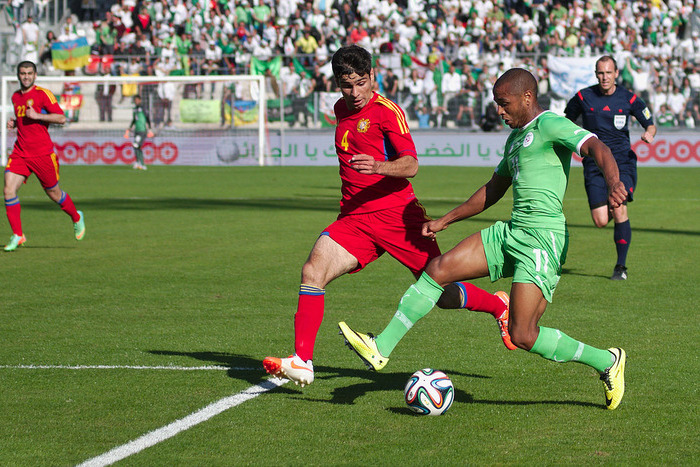By 2050, two-thirds of the childhood pitches of icons like Messi, Ronaldo, Salah, and Mbappé will exceed safe heat limits for play, says the report.
Host stadiums across the US, Mexico and Canada are facing dangerous heat, escalating drought, and intensifying storms ahead of the 2026 FIFA World Cup. A report titled “Pitches in Perils” by Football for Future, a non-profit organisation for football sustainability, said players’ health is increasingly at risk and grassroots pitches are even more at risk.
Stadium and Grassroot Pitches At Risk
The report found that 10 out of 16 stadiums hosting next year’s World Cup have already breached safe-play limits due to extreme heat. Even the grassroots pitches where every player takes their first step have already passed unplayability thresholds for multiple hazards. For instance, two-thirds of the childhood pitches of icons like Messi, Ronaldo, Salah and Mbappé will exceed safe heat limits for play by 2050.
“If rising heat and floods make those spaces unsafe, we’re not just losing pitches, we’re undermining the very foundation of football’s future,” said Elliot Arthur-Worsop, founding director of Football for Future.
In the global south, where historic emissions are lower but adaptive capacity is weakest, on average pitches face seven times more unplayable heat days than in the Global North, according to the report.
Fans and Footballers Call for Action
Many players have expressed their concerns and are calling for action to protect football’s future. Juan Mata, a 2010 World Cup winner, said, “Football has always brought people together, but now it serves as a stark reminder of what we risk losing if we fail to act. We all have a responsibility to confront this challenge, not just for our communities today but for future generations.”
Climate scientists warned that the 2026 FIFA Men’s World Cup in North America could be the last of its kind without significant adaptation to rising climate risks.
The report also included a 3,600-person survey of fans across North America. This survey revealed that 90% of fans want the World Cup to prioritise sustainability, and over half of those surveyed have already experienced match disruptions due to climate-related impacts. Furthermore, 86% of fans believe clubs and governing bodies should speak out on climate change, even if they are still in the process of reducing their environmental footprint.
The report urged that governing bodies should commit to net zero by 2040 and publish credible decarbonisation plans — matching the ambition of leading football institutions and aligning with IPCC climate targets. Major organisers should invest in grassroots resilience through adaptation funds and community-led climate action — ensuring the legacy of major tournaments protects the local grassroots game and the future of football.
About The Author
You may also like
Air Pollution is Changing the Lightning Patterns in India, Study Finds
Can green trade barriers save the environment?
Temporary CO2 Removal Will Help Offset Methane Emissions: Report
Rise in Fossil Fuel Burning is Making Floods Lethal in Asia
Heatwaves Drove 9% of India’s Power Demand in the Summer of 2024

